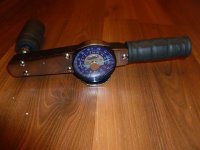Wizard
New member
I damaged the rear tailshaft on my JK out wheeling a week or so ago, and have since ordered a new rear driveshaft, and new front drive shaft.
My JK is a 2013 Unlimited Rubicon with an automatic gearbox.
My question is, is there set (or factory) torque settings for the nut on the front and rear pinion, flange nuts on transfer case, as well as torque settings for the smaller bolts associated with the tailshaft. If someone could provide these torque setting it would be appreciated.
Is there anything I should be careful of when making the change?
It probably doesn't look bad, but it's caused a hell of a vibration at road speed.

My JK is a 2013 Unlimited Rubicon with an automatic gearbox.
My question is, is there set (or factory) torque settings for the nut on the front and rear pinion, flange nuts on transfer case, as well as torque settings for the smaller bolts associated with the tailshaft. If someone could provide these torque setting it would be appreciated.
Is there anything I should be careful of when making the change?
It probably doesn't look bad, but it's caused a hell of a vibration at road speed.




